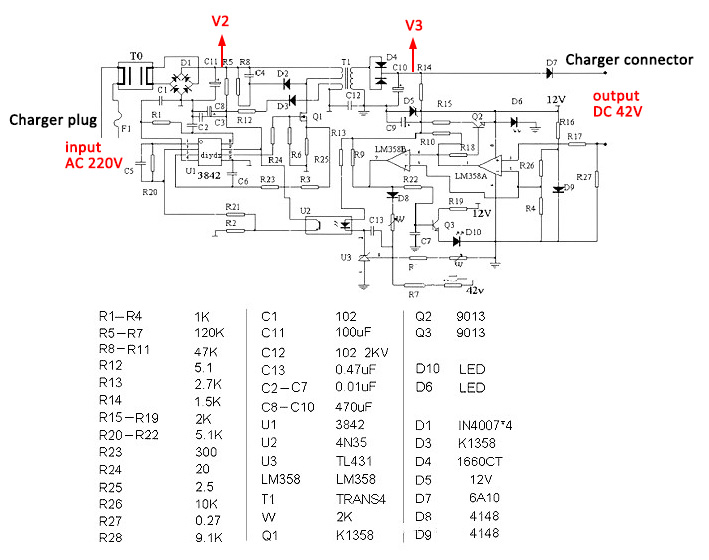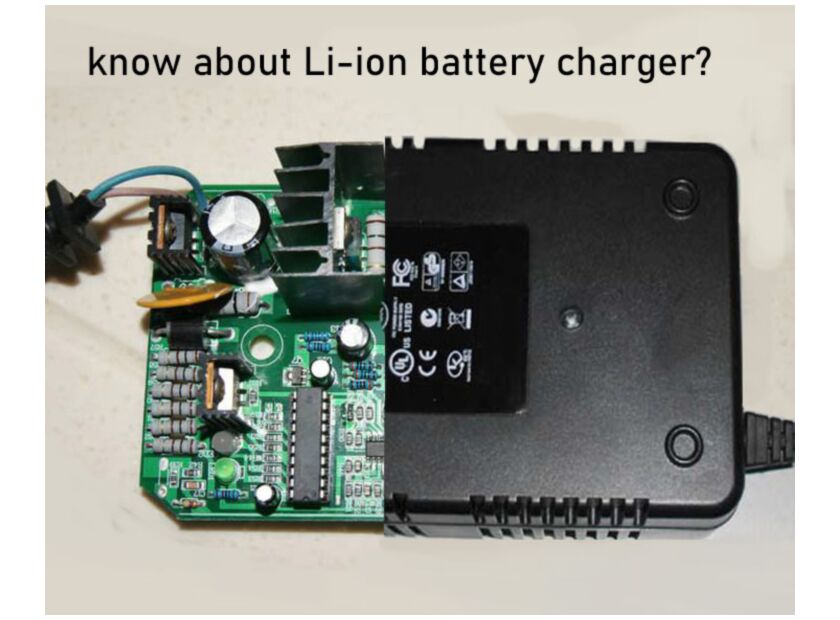What you need to know about electric bike or electric scooter Li-ion battery charger?
What you need to know about the electric bike or electric scooter Li-ion battery charger?
Here you could see three important parts about the Li-ion battery charger:
- What is a Li-ion battery charger for an electric bike or electric scooter
- How to choose the lithium battery charger for your electric bike or electric scooter
- How does the Li-ion battery charger work
1. What is a Li-ion battery charger for an electric bike or electric scooter?
Given most electric bikes or electric scooters are powered by Li-ion battery, here are talk about the Li-ion battery charger only.
A Li-ion battery charger is a device that connects the lithium battery to the general power source, helps to transform the energy in the lithium battery cells by forcing the electric current through it. Generally, the charger is composed of a housing, input and output plug, rectifier circuit, power conversion circuit, charging monitoring circuit, charging protection circuit, etc.
2. How to choose the Li-ion battery charger for your electric bike or electric scooter?
Mostly, the lithium battery charger comes together with the battery when you ordering a battery.
But sometimes you need a new or extra charger, the following factors could be considered to choose the right charger which will make your battery function as safely and efficiently as possible.

(1) Charger input
Sincere home electricity varies from country to country, such as 120V in the USA, 220V in China, EU, GB, etc. So when you pick up a lithium battery charger, you should ensure its input voltage is supported by your home electricity.
(2) Charger output
Output Voltage
First, let's see about the output voltage, it should be compatible with your battery.
For a 10s Li-ion battery (with 10 cells in series, we call it a 36V battery generally), the charger output should be 4.2*10= 42.0 V.
For a 13s Li-ion battery, the charger output should be 4.2*13= 54.6 V.
For a 14s Li-ion battery, the charger output should be 4.2*14= 58.8 V charger.
For a 20s Li-ion battery, the charger output should be 4.2*20= 84 V charger.
And so on.
Output Current
A basic charger usually charges at around 2 amps. But it takes too much time with a 2amps charger especially for the larger lithium battery such as 30Ah or bigger. So there is a wide range of chargers with different charge rates on the market now- from 2 to 20 amps or higher. The higher the charger output current, the faster to get the battery full. But the higher current may harm your battery or even make a burning. So what output current of the charger could be choose?
Generally, we suggest that the charger with an output current of 0.5C-1C.
The “C” rate is the rate of charge (or discharge) as compared to the capacity of the battery.
C-Rate (C) = Charge or Discharge Current (A) / Rated Capacity of Battery
For a 10 Ah battery pack, 0.5 C would be 5 A, 1C would be 10A.
if you use 3.5 Ah cells, and you have 4 in parallel (3.5Ah*4= 14Ah) , the output current of the charger has better to be less more than 7 A. Even 7 A is a pretty high charging rate for lithium batteries. The lower current you charge at, the happier your batteries will be and the longer they will last.
Most common Li-ion battery chargers for electric bicycles or scooters are found in the 2 A to 5 A range. These are all reasonable current levels for most batteries. But if you have a very small battery, such as a 5 Ah battery pack, a 5 A charger would be 1 C, which would be the limit of most cells. So always remember to keep that in mind when choosing your charging current.
(3) Plug and charging connector
Plug- connecting to your home electricity
See the picture below, the plugs may be different in different countries. So you should choose the right one which works with your home electricity socket, or you may need a transform adapter.

Charging connector- connecting to your Li-ion battery
The following picture shows some common connectors. Please note that pairing charging connectors include a male and a female connector, so if it is a male connector in your Li-ion battery, then it should be a female connector in the charger.

3. How does a Li-ion battery charger work?
One end of the charger is connected to the home electricity to obtain 120v or 220V AC power, and the other end is connected to the battery. After obtaining the AC electric power, the charger converted it into a stable DC electricity such as 42V or 54.6V or others which would output to battery.
During the charging cycle, the charger outputs current to the battery to force lithium ions to pass from the cathode through the electrolyte to the anode. The electrons provided by the charger then combine with the lithium ions to provide the stored electrical energy.
Mostly, charging Li-ion batteries can be split into two main stages:
Constant current charge:
During this stage, the voltage across the Li-ion battery cell increases for the constant current charge. The battery will be charged to around 80% of its capacity at the fastest possible rate.
Constant voltage charge:
After a time the voltage peaks at around 4.2 Volts. At this point, the battery will enter a second stage of charging known as Constant voltage charge. The charging voltage is held constant in order to prevent damage by overcharging and keep the battery at a full charge, replenishes the remaining 20% of charge.
Maintaining a constant voltage gradually reduces the current until it reaches around 0.1 C, at which point charging is terminated.
It should be remembered that the charging process is not totally efficient -around 95% , some energy is lost as heat.
Here attach one charger circuit for reference.

The main AC220V input(V1) could be first filtered by T0 bidirectional filter to suppress interference, after then it may be rectified by D1 full-wave rectifier and filtered by C11 capacity to get a DC 300V voltage(V2).
This V2 is then delivered to the T1 transformer. Through T1, we get two voltage, one is rectified by D4 rectifier and filtered by C10 to get a low and safe DC voltage V3, another one is powering the Q1- K1358 FET.
At the same time, V2 flows through the R5 120k resistance to power the UC3481. Once working, the UC3481 output the square pulse to make the Q1- k1358 work.
V3 goes through the R14, D5, C9 to offer a 12V voltage to LM358 and the peripheral circuit.
When the charger is working, there is a 0.15-0.18V voltage on R 27, then the LM358 will output a high level to enable the Q2- 9013function to light on the D6 ( red ), and disable the Q3- 9013 to shut off the light D10 ( green ). When charging in constant voltage, the current will be smaller and smaller. When it is 200mA to 300mA, the voltage on the R27 will decrease, the Q2 is disabled and the D6-light red off, the Q3 is enabled and D10- light green on.
D7 could prevent counter-charging.




Sign In
Create New Account